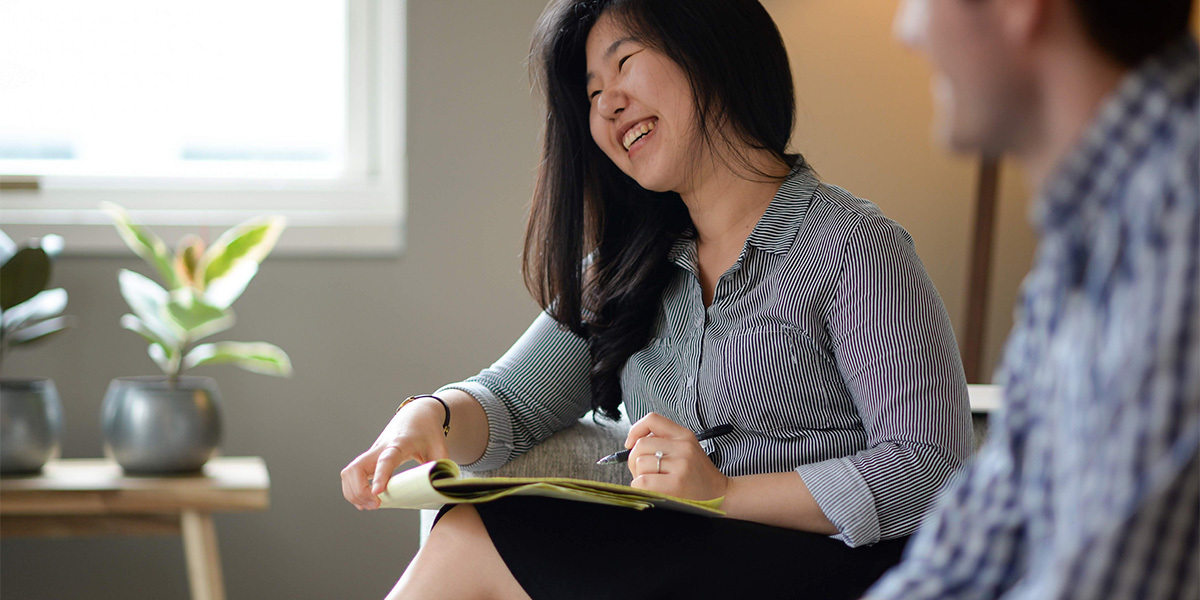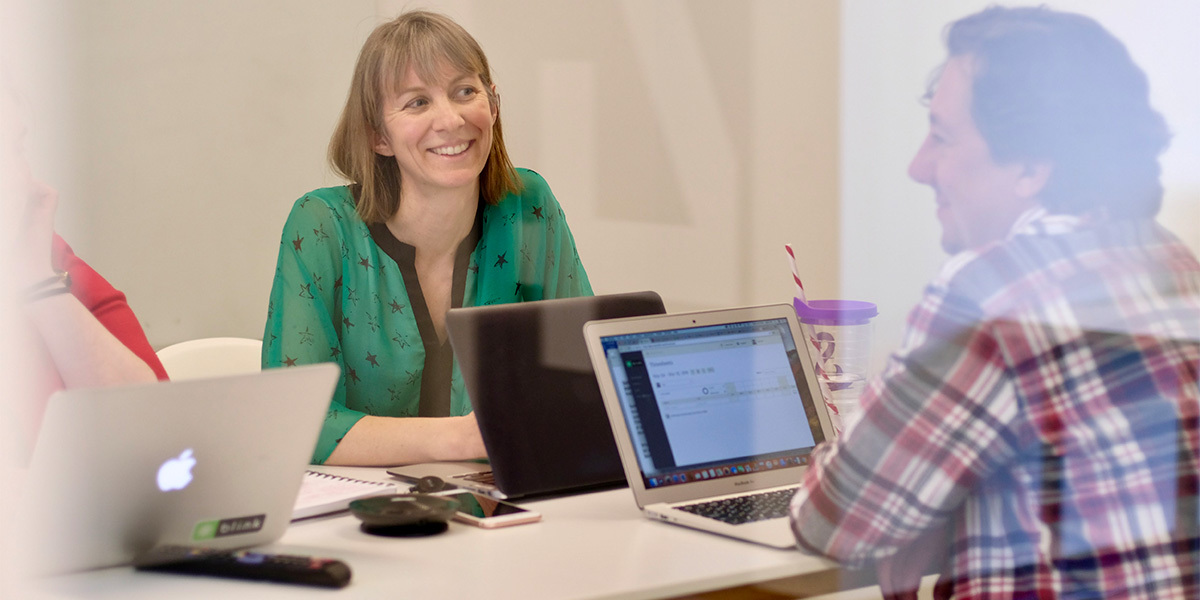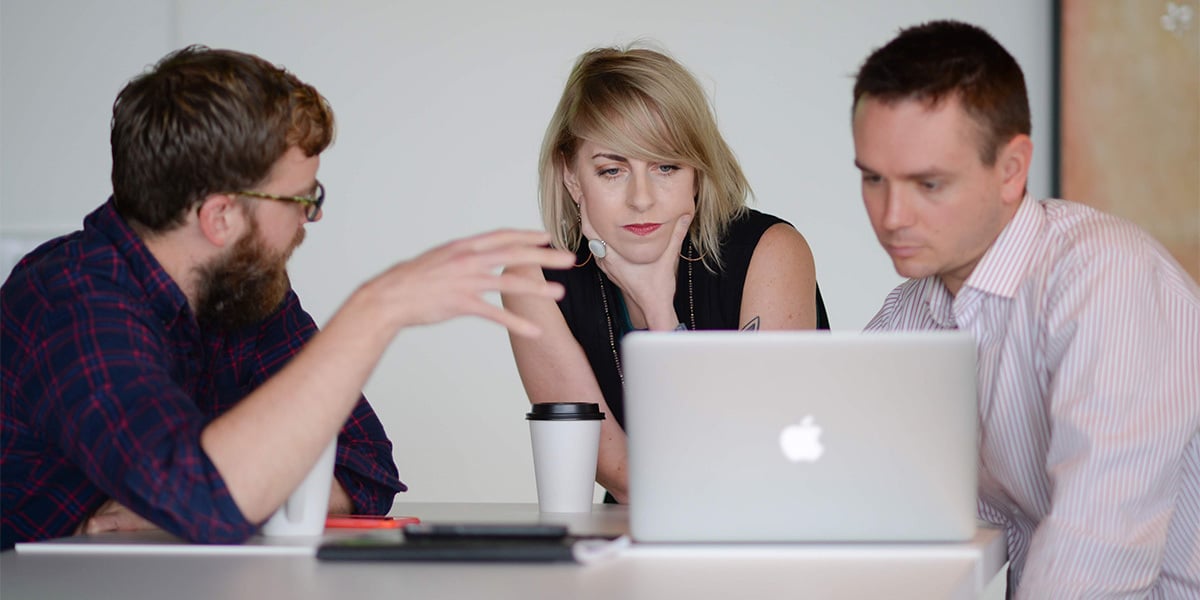
By
Roxane Neal
So your company needs a redesign to deliver a better user experience but doesn't have the skill set internally. If your project requires the skills and expertise of a UX consulting company, you may not know where to start. What can you do other than review their website and social media channels? What should you know before choosing a firm?
If you need some guidance, we're here to help. Here's what to ask in a UX consultation.
Working style
You need to choose a UX firm whose workflow is compatible with your own. These questions cover everything necessary to get work done, such as your communication styles, your collaboration preferences, and the extent of your involvement in the process.
1. Does your team work on-site at our location, or do you stay in your space?
Innovative thinking is important in a UX partner, as is close collaboration. That's why you should ensure the firm's preferred daily engagement method aligns with your expectations. Not all firms embed full-time into your team.
At Blink, for example, we work both ways. Our consultants work in our studios for some projects when it provides the best environment for getting work done — though we also spend plenty of time on-site in direct communication with our clients. In other engagements, we may embed our teams with a client's engineering teams during implementation to make sprints as efficient as possible. Understanding a client's location expectations is essential for determining whether we are a good match for their project.
2. What methods do you use for communicating with your clients?
Collaborative projects such as UX design and research require that you and your UX consulting partner agree on communication expectations. Whether you prefer real-time chats or scheduled phone calls, sharing the same communication philosophy helps keep your projects on schedule.
For example, while the firm may prefer daily syncs, you may want less frequent communication. On the other hand, you might want to be able to reach them quickly by instant message (IM), but they may be slow to get back to you. You may want to have critical conversations in person, but the firm may want to use video conferencing instead. Misaligned communication styles can create inefficiencies within the process and interfere with your project's overall chances of success.
3. What is your strategy for managing distributed teams?
Sometimes, you have to look beyond your local offerings to find the best fit. When your UX firm is too far away to meet in person easily, you need to know whether their team will travel for face-to-face meetings such as workshops or kickoffs.
Ask which communication tools a firm uses with its remote development teams. Do they use video conferencing services such as Skype or Zoom? IM platforms such as Slack or Microsoft Teams? Productivity tools such as Asana or Airtable? Ideally, they will use a tool that is compatible with your existing systems.
Additionally, if your firm is across the country, discuss how you will manage time zone differences. Having an effective plan in place enables a continuous workflow so you can maintain productivity even from different regions.
4. How closely will our developers work with your designers?
The design process creates the materials your development team will use, so you need to understand your consultant's methodology and how your developers fit into it. Ideally, the UX team includes your developers during significant project steps throughout the process, such as stakeholder interviews, kickoffs, journey mapping, and design reviews. When your developers are present, the design team can better incorporate their ideas and knowledge.
You should also know the process for handing off designs. Project deliverables can include:
- Information architecture maps
- Wireframes
- UI/UX
- Working prototypes
- CSS files
- Code snippets
Seamless collaboration between designers and developers improves the likelihood that your initial designs will make it to the final product. Additionally, when developers and designers work together, they create a more well-rounded team. Designers will better understand the technical limitations and challenges, while developers gain more sophisticated insights into what elements make a good UX design.
Agile development is an excellent example of why effective collaboration is so crucial. Often, the agile development process requires designers to work one or two cycles ahead of the developers to ensure visual design assets are finished on time. Before beginning a project, learn if each UX firm accommodates the agile process and how that works.
5. How involved can we be in user interviews? Can we come along in field research?

If you're eager to engage with customers or representative users, that's great. However, if you're relying on a UX firm to execute the research, you may have to take a back seat. Clarify whether the firm allows you to interact with research participants. They may invite you to participate in field research or user interviews, or they may prefer to give you session recordings after the sessions are completed.
At Blink, we've found that each client has different availability and interest levels when it comes to field study and usability testing participation. We include many of our clients in field research. However, we follow a different protocol for user testing — our researcher is the only one interacting with users during a session, and our clients get access to the live streams.
Ultimately, you should understand your role in testing and what deliverables you can expect to receive.
Process
A project's success relies on a solid UX process. From start to finish, your firm should follow an established, data-driven process with clear milestones and deliverables at each stage. You should know in advance: how involved the firm expects you to be when you need to be involved and what you can expect to happen if obstacles arise.
6. How will client specifications factor into your UX strategy?
UX consulting firms typically apply a user-centered design (UCD) approach to product design. However, your specifications, including critical technical requirements, are crucial to any design. During consultations with each firm, ask how their process incorporates these requirements and discuss how you can check designs against them.
Your UX agency should also follow a data-driven approach that uses clear benchmarks to track and evaluate progress. Let's say you're working on a web design project. Your UX firm might use the following behavioral metrics to assess your site:
- Bounce rate
- Pages per session
- Conversion rate
- Average session duration
- Ease of navigation
Collecting this data helps guide the design process by revealing potential areas for improvement. For example, if users tend to bounce off a specific product page, it's worth looking into why that is. The page may be slow to load, or the images may be poorly rendered. Once the team has made the necessary changes, they can test the design again to determine how well the solution worked.
Experience
As with any other professional service, you want to choose a firm with expertise in your industry. Go beyond scrolling through third-party review sites and social media posts to learn more about the firm's success rate with projects similar to yours. Ask the firm directly for information about previous clients and projects to get a better idea of their track record.
7. Do you have experience with similar projects?
Many factors contribute to your design project's complexity, including:
- Project domain
- Target audience
- Stakeholders
- Company type
The firm's portfolio should be easily accessible on its website — look for a page titled "Work," "Our Projects," or something similar. Their portfolio should demonstrate experience in various industries, project types, and approaches. Ideally, the firm should also explain the rationale behind its design decisions.
Ask for an in-depth look into the projects that are similar to yours. If the firm is hesitant to answer your questions or they provide only basic information, you may want to move on to the next firm on your list.
While we believe in the effectiveness of using UCD research tools to address various project components, we also understand the value of applying lessons learned through experience to new projects. Knowing what worked for previous projects helps us adapt to unexpected circumstances in the design process, resulting in a smoother experience and a better chance of success.
Get in touch with Blink UX
These UX consultation questions are a great place to start when evaluating which firm is the best fit for your project. Be thorough in your research — it might take time to find the right firm, but once you do, you'll gain the resources you need for a great experience or product.
If you're looking for a firm that takes an evidence-driven approach to UX design, we'd love to work with you. Reach out today for more information.
As a user researcher at Blink, Roxane is a professional question-asker. She uses qualitative and quantitative research methods to understand customer needs to inform the design of digital products. Blink UX is a UX consulting firm with studios in Seattle, San Francisco, San Diego, Austin, and Boston.




